May 23, 2024
How to Start Investing and Watch Your Wealth Grow

Investing: The Millennial’s Path to Financial Freedom
Imagine setting sail on a journey where avocado toast meets stock market savvy, and Instagram-worthy adventures thrive on smart investing. Forget the notion that financial freedom is reserved for the grey-haired elite; it’s time for millennials to seize the reins and rewrite the narrative. Investing isn’t just about numbers on a screen; it’s about crafting a future where passions flourish and dreams take flight. So, grab your laptops and smartphones, and let’s navigate the world of investing together, turning those coffee shop savings into a ticket to financial liberation and millennial empowerment. Ready to discover how to start investing and craft a brighter tomorrow?
What is Investing?
First and foremost, let’s demystify the concept of investing. Investing isn’t just about parking money in stocks or bonds; it’s about planting seeds today that blossom into a future of abundance. Simply put, investing is the art of putting your money to work for you, whether it’s through stocks, real estate, or starting your own business. It’s about harnessing the power of compounding returns and riding the waves of innovation to build wealth over time. By strategically allocating resources and cultivating a diversified portfolio, individuals pave the path towards financial freedom.
However, this freedom transcends mere monetary gains; it’s the ability to make choices based on desires rather than limitations, to pursue passions without the constraints of financial insecurity. Picture this: instead of mindlessly scrolling through social media, imagine leveraging those same digital tools to research promising investment opportunities and make informed decisions that shape your financial destiny.
Beyond Monetary Gains
Moreover, investment is not just about accumulating wealth; it’s about crafting a life of autonomy and abundance. In a world where student loans and skyrocketing housing prices often dominate the conversation, investing emerges as the antidote to financial stagnation. It’s about reclaiming control over your financial future and building a life where financial freedom isn’t just a distant dream but a tangible reality.
So, let’s ditch the stereotypes and embrace a new narrative—one where millennials harness the tools of the digital age to carve out a path to prosperity and redefine what it means to achieve financial freedom. Through investment, individuals cultivate resilience against economic downturns, establish passive income streams, and build a foundation for long-term prosperity. Ultimately, investment serves as a vehicle for individuals to break free from the shackles of financial dependency, empowering them to design a life of purpose, fulfillment, and limitless possibilities.
How to Start Investing: A Five-Step Guide

All these are too easy to say and too nice to imagine; but more often than not, we are stopped by these important questions: How can I easily learn about investing? We heard you, and we are here to help you learn the basics of investing to achieve your dream of financial freedom.
To kickstart your journey into the world of investing, it’s essential to lay a solid foundation of knowledge. In this article, we’ll explore the essential steps to start investing, empowering you to make informed decisions, navigate the complexities of the financial markets, and ultimately, achieve your financial goals.
1. Define Your Goals
Before diving into the world of investing, take some time to clarify your financial goals. Whether it’s saving for retirement, buying a home, or funding a dream vacation, having clear objectives will guide your investment decisions and help you stay focused amidst market fluctuations.
- First, reflect on your aspirations. Ask yourself the important question: What do you want to achieve financially? Are you saving for retirement, purchasing a home, starting a business, or funding your children’s education? Write down your short-term, medium-term, and long-term goals, prioritizing them based on their importance and timeline.
- Next, quantify your goals. Once you’ve identified your aspirations, quantify them in terms of specific targets and timeframes. For example, instead of just saying you want to retire comfortably, specify the age at which you’d like to retire and the amount of income you’ll need to maintain your desired lifestyle. Similarly, if you’re saving for a down payment on a house, determine the target amount and the timeline within which you’d like to achieve it.
- Finally, assess your risk tolerance. Our hard-earned money, just like any other resources, is limited. Consider your risk tolerance and investment preferences when setting your goals. Are you comfortable with taking on more risk in pursuit of higher returns, or do you prefer a more conservative approach? Understanding your risk tolerance will help you tailor your investment strategy to align with your comfort level and financial objectives.
By following these three steps, you’ll gain clarity and direction in defining your financial goals, laying the groundwork for a successful investing journey.
2. Educate Yourself
Next, investing is all about knowledge. Start by familiarizing yourself with the basic concepts of investing, such as stocks, bonds, mutual funds, and ETFs. Educating yourself about investing is essential for making informed decisions and navigating the complexities of the financial markets.
Take advantage of online resources, books, courses, and podcasts to better understand and gain confidence in your investment choices. We have provided materials written by experienced investors and experts on financial topics like stocks, bonds, mutual funds, and asset allocation.
Additionally, consider attending webinars or workshops hosted by financial professionals in your community to gain practical insights and networking opportunities, as they are available on various platforms such as Coursera, Udemy, and LinkedIn Learning.
Remember to approach learning with curiosity and an open mind, and don’t hesitate to seek guidance from trusted mentors or financial advisors along the way.
3. Open an Account
Once you feel comfortable with the fundamentals, it’s time to open an investment account. Whether it’s a brokerage account, a retirement account, or a platform like Robinhood or Acorns, choose an option that aligns with your goals, risk tolerance, and investment preferences. Here are some key steps to guide you:
- First, research and compare different brokerage firms or financial institutions. Consider factors like fees, investment options, account minimums, and customer service.
- Next, once you choose a provider, complete their application process by providing personal and financial information. Specify the type of account you want (e.g., individual brokerage, retirement, or education savings). Review terms, fees, and investment options carefully.
- Finally, fund your account via bank transfers or deposits from other investment accounts, utilizing electronic transfer options. Develop an investment strategy aligned with your goals, risk tolerance, and time horizon. Diversify your portfolio, monitor investments regularly, and stay updated on market trends and economic developments.
4. Start Small
Investing doesn’t require a large sum of money upfront. Start small by investing what you can afford to lose comfortably. Many brokerage firms offer fractional shares, enabling investment in high-priced stocks with just a few dollars. In this way, you limit the potential downside of your investments, especially if you’re new to the market or uncertain about your risk tolerance.
Investing small amounts helps you gain experience and learn from mistakes without risking a large portion of your savings. Spreading investments across different assets or securities reduces risk and enhances diversification, protecting your portfolio from market ups and downs.
Another obvious reason is that starting small instills a sense of discipline and helps you develop good investing habits from the outset. Consistently investing small amounts over time, whether it’s through regular contributions to a retirement account or periodic purchases of low-cost index funds, builds momentum and reinforces the habit of saving and investing.
As your confidence grows and you become more comfortable with the investing process, you can gradually increase the size and complexity of your investments.
Furthermore, while doing this, you are able to harness the power of compounding over time. Even modest contributions can grow substantially over the long term through the magic of compounding returns. By reinvesting dividends and allowing your investments to grow uninterrupted, you amplify the effect of compounding, potentially generating significant wealth over time.
Starting small and staying invested allows you to capitalize on this powerful phenomenon and reap the rewards of long-term investing.
5. Diversify Your Portfolio
Diversification is key to reducing risk and enhancing returns. Don’t put all your eggs in one basket. Reduce risk by diversifying across assets, industries, and regions. Invest in stocks, bonds, cash, and alternatives like real estate or commodities. Each of these types of assets behaves differently in different market conditions.

Diversifying across assets reduces portfolio volatility for more consistent returns. Consider international investments for further risk mitigation. Economic and political factors vary, which affects market performance and opportunities. Geographic diversification reduces country
Geographic diversification reduces country-specific risks, allowing access to more markets and sectors. In stocks, diversify across sectors like technology, healthcare, finance, and consumer goods. Also, spread your investments across companies of different sizes—large, medium, and small. Different sectors and company sizes have their own risks and growth potential. Diversifying protects your portfolio from downturns in specific sectors or setbacks in specific companies.
Traditional Learning Resources for Beginners
Furthermore, while you have these five easy steps, it is also important to go beyond this and learn as much as you could to prepare you in this endeavor. Luckily, in today’s interconnected world, resources abound, catering to all learning styles and preferences.
For those who prefer the traditional route, here is a list of beginner-friendly books by seasoned investors:
- “The Little Book of Common Sense Investing” by John C. Bogle, a classic among investors, shares timeless wisdom on low-cost index fund investing and the power of long-term, passive strategies.
- “The Intelligent Investor” by Benjamin Graham, often referred to as the bible of investing, lays out the fundamental principles of value investing. It guides you in analyzing stocks, managing risk, and navigating market fluctuations with discipline.
- “A Random Walk Down Wall Street” by Burton G. Malkiel explores investing history, dispels myths, and gives practical advice for diversifying portfolios. This book is a great introduction to the concept of efficient markets and the importance of asset allocation.
- “One Up On Wall Street” by Peter Lynch shares insights and strategies for successful stock picking. He emphasizes the importance of doing your own research, investing in what you know, and staying patient for the long haul.
- “The Bogleheads’ Guide to Investing” by Taylor Larimore, Mel Lindauer, and Michael LeBoeuf offers a step-by-step guide to investing based on the principles of John Bogle. It covers everything from setting investment goals to building a diversified portfolio and staying the course through market volatility.
Online Learning in the Digital Age
If curling up with a thick tome isn’t your idea of a good time, don’t worry! The digital age has ushered in a treasure trove of online resources that make learning about investing a breeze. From interactive courses to engaging videos and podcasts, there’s something for everyone, regardless of your reading preferences. Whether you’re a visual learner who thrives on multimedia content or someone who prefers bite-sized nuggets of information, these online resources offer a diverse array of options to suit your learning style.
- Investopedia, a comprehensive online resource, offers articles, tutorials, and guides covering investing basics to advanced strategies. Moreover, their extensive glossary of financial terms proves particularly helpful for beginners.
- Khan Academy offers free online courses on finance and investing, covering concepts like stocks, bonds, mutual funds, and retirement planning in an easy-to-understand way, ideal for beginners.
- Additionally, the GoodWhale App offers personalized learning, intuitive investing, and community support, making it a top stock analysis choice. There are numerous YouTube channels dedicated to investing and personal finance that offer valuable insights and advice, such as Graham Stephan, Andrei Jikh, The Plain Bagel, and The Financial Diet.
- Podcasts are another great way to learn about investing while on the go. Numerous investing podcasts, hosted by experts and enthusiasts, cover topics ranging from stock market news to personal finance tips. Some recommended podcasts include “The Motley Fool Podcast,” “Invest Like the Best,” and “The Dave Ramsey Show.”
- Moreover, joining online forums and communities dedicated to investing can be a valuable way to learn from others and share experiences. GoodWhale Community has an active community where investors discuss strategies, share insights, and ask questions.
By leveraging both traditional and online resources, you can expand your investing knowledge. Stay open-minded, verify information from multiple sources, and learn steadily.
Embrace the Journey
Remember, investing isn’t just about numbers on a screen—it’s about planting seeds today that grow into the trees of financial freedom tomorrow. Start by setting clear goals, educate yourself through the online resources that resonate with you, and take action.
Even if you’re starting with small amounts, the key is consistency and discipline. Treat every investment as a stepping stone towards your vision of financial independence.
Never underestimate the power of time in the market. Start early, stay committed, and watch your investments grow over time, leading to a future where your money works for you. By adopting a long-term mindset and staying true to your investment strategy, you’ll be well on your way to achieving financial freedom and building a secure future for yourself and your loved ones.
Final Thoughts
Remember that investing is not a get-rich-quick scheme; it’s a marathon, not a sprint. Patience, discipline, and a willingness to learn are crucial ingredients for success. Embrace the ups and downs of the market, and use them as opportunities to refine your strategy and deepen your understanding.
Furthermore, don’t go it alone. Seek guidance from experienced investors, financial advisors, or trusted mentors who can provide invaluable insights and support. Building a strong network of like-minded individuals can help you stay motivated, accountable, and informed throughout your investing journey.
Lastly, don’t forget to celebrate your successes along the way. Achieving financial freedom is a monumental accomplishment, and you deserve to savor the milestones that mark your progress. Whether it’s hitting a savings goal, reaching a portfolio target, or simply gaining a deeper understanding of the markets, take a moment to acknowledge your achievements and use them as fuel to propel you towards even greater heights.
In conclusion, the path to financial freedom through investing is a rewarding and empowering journey. By following the steps outlined in this guide, educating yourself, and remaining committed to your goals, you’ll be well-equipped to navigate the complexities of the financial markets and unlock a future of abundance and limitless possibilities. So, what are you waiting for? Seize the reins, and let the adventure begin!
Looking to make your money work for you? Let Goodwhale be your guide to investing success. Start your journey to prosperity now!



